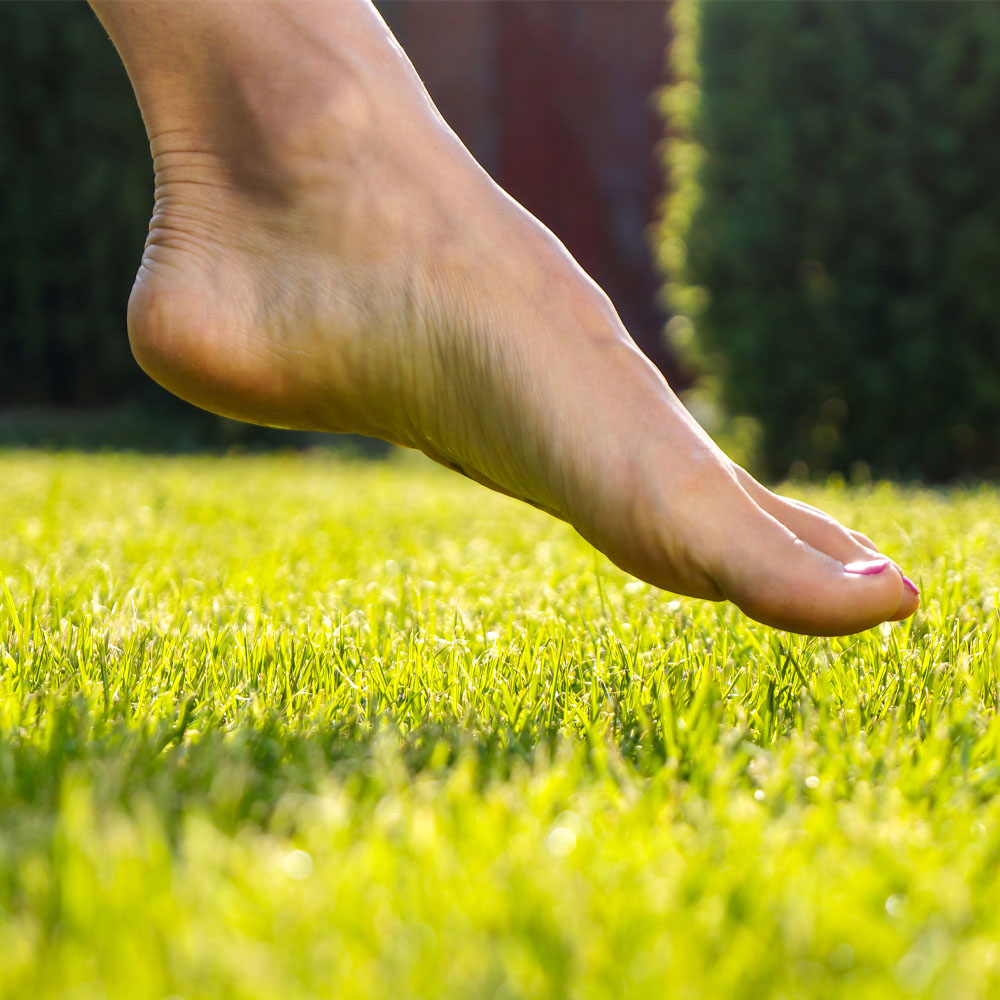"Pain Free SECRETS"
What "THEY" don't want you to know
(This Video)


Knees
My Knee hurts…. guess what….it's not your knee! Knee problems are the easiest condition to fix! Why? Because no one ever has a knee issue. It is always the Hip Joint that is causing the knee problem. If you have had this condition for an extended amount of time then, of course, you could have done some real damage in the knee joint over time, however, the real cause was the hip. With the proper realignment of the hip, knee problems may disappear! Contact us today so we can look at what is causing your knee pain.
Let me completely explain what is going on with knees in the human body. The knee is a simple hinge joint. Its intended design of motion is simply a front to back motion. It is not meant to move in any other plane. This is where the Hip Joint comes into play. If your ball & socket hip joint is holding your upper leg (femur) either internally rotated (knock knee) or externally rotated (bow legged) are anything in between, this will cause a tremendous amount of stress on the knee joint. The knee joint will not be" tracking" properly which is the reason why someone will end up with a "bone on bone" knee condition.
Many Professionals thought it was just "old age" that caused this condition when really this whole time it was simply just the bad Hip Joint position and weakness in the deep structural muscles around the hip joint itself. It is disturbing when the Orthopedic Surgeons tell their patients that it is "old age" that causes this condition because this is just bad information. If you would like to know how to strengthen your hip joint and relieve your knee pain, contact us today!
It has nothing to do with age and everything to do with how the Hip Joint is telling the knee joint to move.
The Relation Between the Hip Joint and Your Knee
The relation between your hip joint and your knee is symbiotic. Either the knee is tracking properly without cartilage wear or the Hip Joint is asking the knee to move in a manner that it is not designed to move. The Hip Joint is a simple ball & Socket, so it is designed to move in all directions. When the hip joint is not working properly with its full "ball & socket" function it will ask the knee joint to facilitate some of that" round and round" motion. The knee is not designed to move in this manor without doing damage such as cartilage wear, or more extreme injuries such as meniscus tears, or even a ligament ruptures or tears, due to the undue stress and improper movement pattern. Want to know more? Schedule a consultation with us today!
Some Common Knee Conditions:
Patellar Tendonitis – Stress and friction will affect the patellar tendon which can become irritated or damaged. If we think this thru you will realize that this is simply caused by mis-alignment of the knee caused by Hip dysfunction.
Condromalacia Patella Syndrome occurs when the cartilage on the under surface of the patella (kneecap) breaks down as a result of abnormal tracking. It results in pain that may radiate toward the back of the knee. Pain is greatest on the inner, lower part of the knee. Left untreated, Chondromalacia can lead to arthritis, but it is easily healed by realigning the hip and knee to eliminate the friction.
Osgood-Schlatter Disease – as the quadriceps contract, especially during growth in adolescents, the patellar tendon is pulled where it attaches to the shin bone (tibia). Pain at the top of the shin may be felt which may last for several weeks or even months. If the alignment from the Hip joint is a little off center, this will result in the components of the knee to be stressed causing abnormal tugging and/or pulling. If things are aligned properly, your body has the best opportunity for this pain to subside.
Knee Strain is mild injury to tissue or other structures, such as tendons. If the knee joint is dysfunctional, these components become stressed causing this injury.
Knee Sprains are a moderate injury to tissue or other structures, such as ligaments. This is a more advanced issue compared to a strain, caused by continued knee joint dysfunction.
Ligament Tears include complete or partial tears of the ACL, LCL, MCL or PCL ligaments. This is a very advanced condition. Imagine if you pull a rubber band too tight or attach a five-pound weight to it: it will rip, tear, or strain. The same is true for the ligaments. Excluding trauma, ligament tears result when the hip joint asks the knee joint to facilitate motion and load it is not designed to do.
Bursitis is an inflammation of the bursae (fluid-filled sacs that cushion the bones, tendons and ligaments). These sacs can enlarge with extra fluid, resulting in joint pain, tenderness, and swelling as they push against the inner tissues. These conditions are caused by positional stress.
Arthritis is the grinding down of the cartilage caused by the knee joint not ""tracking" properly. The hip joint mis-alignment is the culprit. This is what we call an arthritic knee.
Degenerative Joint Disease occurs when advanced arthritis starts to break down the actual bones of the joint.
Meniscus tears happen if the knee joint is dysfunctional as the upper leg (femur) and lower leg (tibia) become mis-matched and the result of this abnormal positional stress during twisting motion results in strains and tears of the meniscus tissue.
Bakers Cyst happens when the knee is not in a good position and not tracking properly. As a result, the body's natural process is to "over produce" the lubricating fluid call Synovial fluid, in an attempt to come to the knees rescue. This over production of fluid needs a place to go. It will then begin to gather behind the knee causing pressure and discomfort. This is what becomes a "Bakers cyst." It could also be a result of some actual damage in the knee joint such as a meniscal tear etc.
If you have pain in your knee(s) the best thing to do is come see us and let us take a look. Contact us today!
Operations on the Knee
Knee "Scoping"
Knee Arthroscopy is a surgical technique that can diagnose and treat problems in the knee joint. During the procedure, your surgeon will make a very small incision and insert a tiny camera—called an arthroscope—into your knee. This allows them to view the inside of the joint on a screen. The surgeon can then investigate the problems of the knee and, if necessary, correct the issue using small instruments within the arthroscope. Arthroscopy addresses several knee problems, including torn anterior or posterior cruciate ligaments, torn meniscus (when the upper leg and lower leg become mismatched and cause stress on the meniscus, resulting in out of the norm twists and movements and then causing tears in the ligament), an out-of-position patella, loose pieces of torn cartilage, removal of a Baker's cyst (an overproduction of fluid in the knee to make up for unnatural movement), fractures in the knee bones, and swollen synovium (the lining in the joint). There are limited risks to the procedure and the outlook is good for most patients. Your recovery time and prognosis will depend on the severity of the knee problem and the complexity of the required procedure.
I am always a little shocked when someone tells me, usually very casually, they got their knee "scoped". They act as if this is a simple basic procedure. They usually don't realize how traumatic this operation was for the muscles, ligaments, tendons, and bones of the knee joint. The surgeon used tools like chisels, bone cutters, drills, levers, mallets, saws, calipers, dissecting knives, forceps, clamps, hooks, scalpels, probes, retractors, scissors, suction tubes, needles, sutures, shavers, and/or biters. These are some very serious tools to be using on your body.
If the surgeon did any corrective procedures, he may have shaved off and removed tissue and bone, separated the muscle, and trimmed, probed, cut and shaved your knee components. Sewed muscles, ligaments, tendons and skin together. Drilled and screwed metal into bone and more.
When someone casually says they got their knee "scoped", there is a lot more to it than meets the eye. This is serious business, and it is not to be taken lightly!
There are also risks specific to a knee arthroscopy, such as bleeding inside the knee joint, formation of blood clots in the leg, infection inside the joint, stiffness in the knee, injury or damage to the cartilage, ligaments, meniscus, blood vessels, or nerves of the knee and, of course, scar tissue.
Knowing all of this, why would you take the risk of "going under the knife" before trying "Anatomical Therapy™" first? You can correct most of these issues naturally, simply by correcting your body's position and correcting the way your knee performs, allowing your knee to heal and repair? Do you think cutting, shaving, drilling etc. important parts of our body needed for everyday use is our best choice? Most definitely not! Contact us for a consultation today!
Bone on Bone: The Kiss of Death … or is it?
I can't count how many times I have heard someone say about their knees, "I'm bone on bone." They relay this diagnosis with an air of helplessness. Their surgeon has convinced them that there is no way to treat their condition, except with a total knee replacement. Ironically, at the same time, millions of bottles of joint formulas are being sold online and at retail outlets, and all claim to help regenerate cartilage. This is a bit of a contradiction. If formulas can regenerate our cartilage, why would knee surgery be necessary? And if cartilage can be regenerated … can't our bodies do it by itself? The answer is yes! What's great about this is we can help see what you need.
The body can regenerate cartilage, but If the knee joint is not in the correct position, any new growth will wear away as fast as it can grow. However, if the knee joint is in the correct position, it allows enough cartilage to grow to sustain activity. This has been proven to me by many patients who have avoided knee replacement using my method (Anatomical Therapy™). The reason people head directly for a knee replacement is because they haven't found anybody to correct their anatomical position so the wear and tear marches on. To scientifically prove this, however, it would take a very costly study (possibly millions of dollars). Since no one would benefit from such a study, aside from you and me, I doubt that a study of this nature will ever be conducted. Of course, some people are too far gone, and need, and would greatly benefit, from a knee replacement surgery. To see what we can do for you, contact us today!
Knee Replacement Surgery
Knee replacement surgery is an amazing surgery. The surgeons and their advanced workmanship can actually replace a complete joint in the human body and they are very successful. The tragedy, however, is that these surgeries cannot prevent or avoid the original issue from happening again. You read that right: unfortunately, the replacement will not correct the original issue. When the hip joint is not working properly with its full "ball and socket" function it will still be asking the knee joint to facilitate some of that"round and round" motion. The scary part is that now, the metal components of the knee replacement are not flexible and/or movable. This continued poor position and function will now attack the other knee and hip joints.
The majority of people who get a knee replacement will, in time, need another knee replacement or a hip replacement. The knee replacement will rarely end with just one surgery.
See if you can avoid knee surgery, contact us for a complimentary consultation.
Start your journey
We help you rebuild your body and correct your spinal alignment, resulting in unlimited positive changes to your health. We are here to improve your life — Make an appointment with our office today.
Pete's Blog

08/28/2020
Regular exercise for your feet >>

08/28/2020
Regular exercise for your feet >>

08/28/2020
Regular exercise for your feet >>

08/28/2020
Regular exercise for your feet >>




